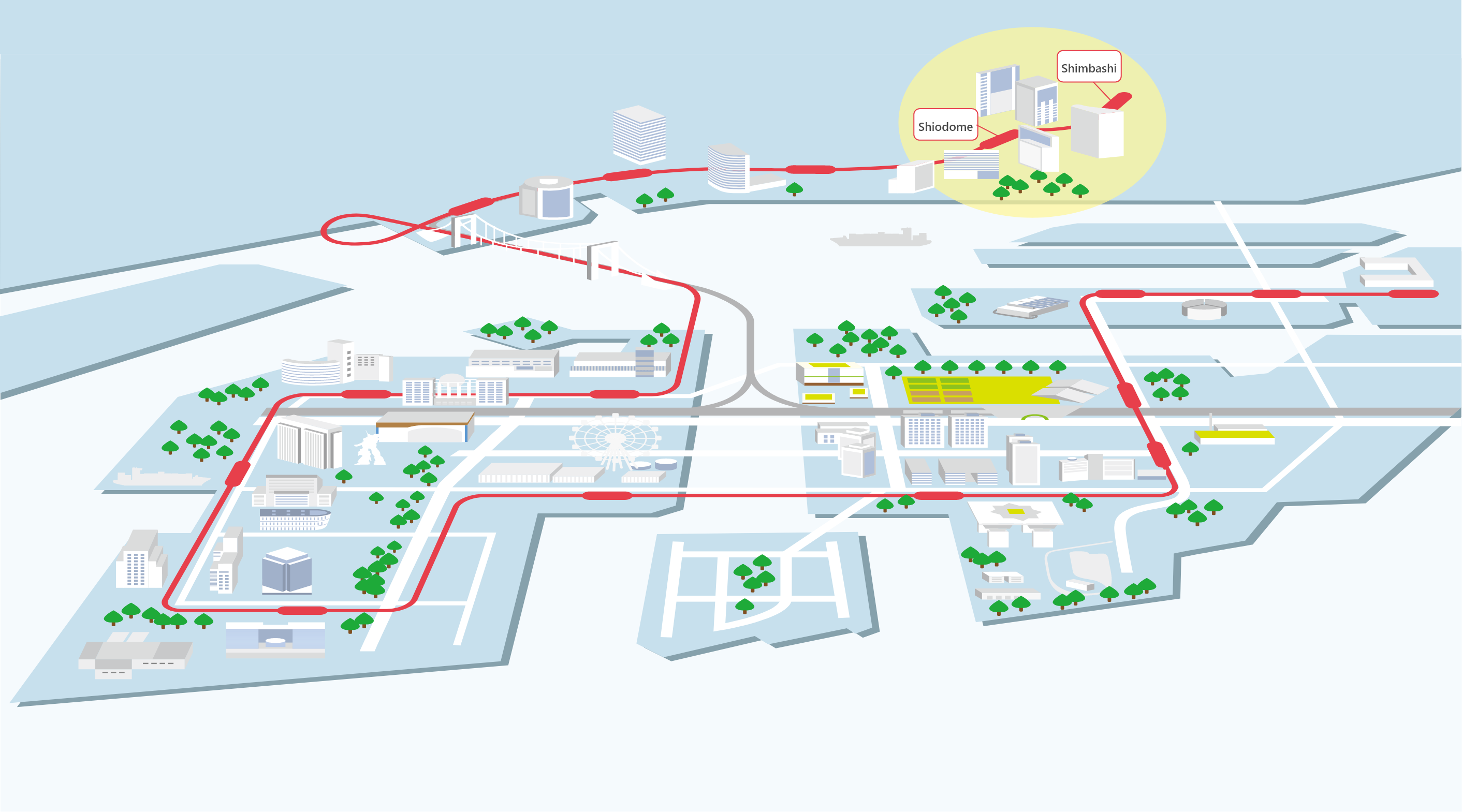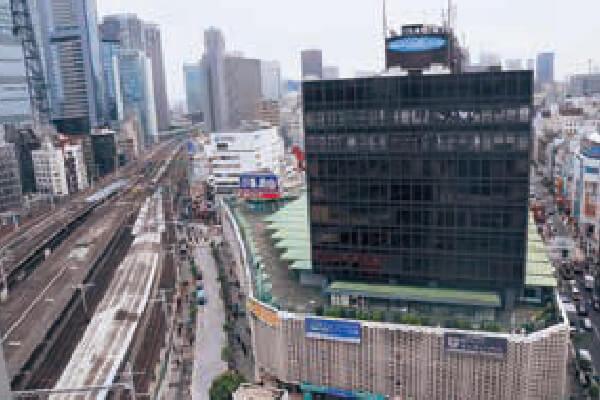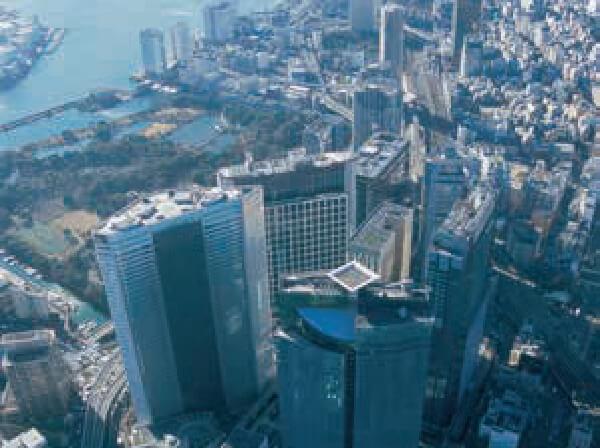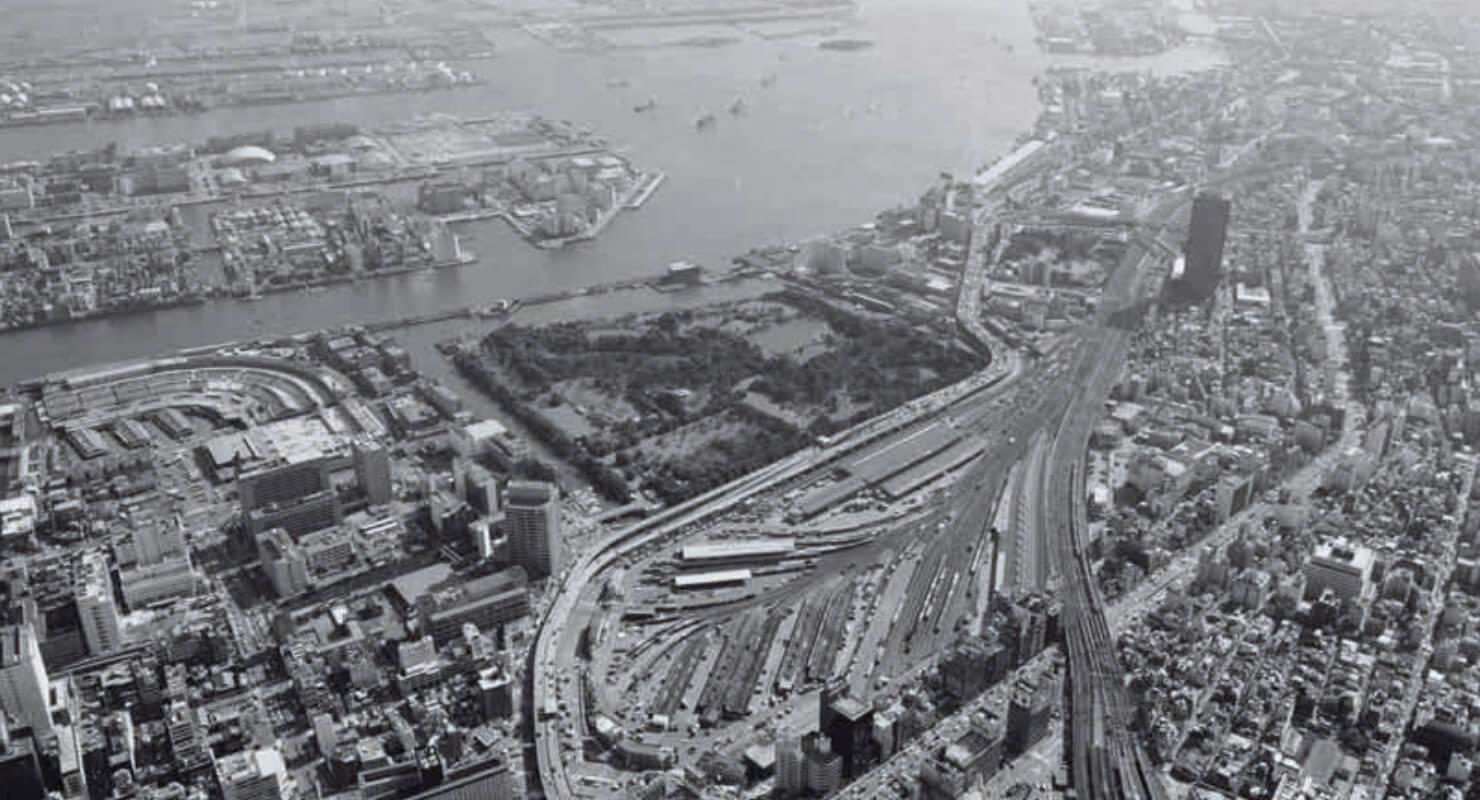- Top
- Event Info
- Areas linked by Yurikamome
- Shimbashi・Shiodome Area
Shimbashi・Shiodome Area
- Shimbashi・Shiodome Area
- Takeshiba ? Shibaura・Rainbow Bridge Area
- Odaiba・Aomi Area
- Ariake Area
- Toyosu Area
Guide to Shimbashi・Shiodome Area

Shimbashi--Birthplace of Japanese Railway

As seen in the song " Tetsudo Shoka " (meaning "railway song") written in the Meiji period which begins with the words "Kiteki ichisei Shimbashi..." (Shimbashi, the place where the train blew its first whistle), Shimbashi was the starting point of Japanese railway. It is said that the station was named Shimbashi, meaning "new bridge" , with the building of a new bridge over the Shiodome River in 1604.
The then Shimbashi Station (Shimbashi Teishajo) was renamed Shiodome Station when the Karasumori Station of the Yamanote Line became Shimbashi Station in the Taisho period, and it was operated as a freight-only station until 1986. Today, this "Former Shimbashi Railway Stationi" is a designated national cultural property, with some parts of the former station building reproduced.
Shiodome, commercial district built on the residential site of daimyos (feudal lords)
Home to Nippon TV Tower, Dentsu Headquarters Building, and other skyscrapers such as commercial buildings, hotels, and condominiums, Shiodome Sio-Site is one of Tokyo's leading commercial area developed by redeveloping the site of a former Japan National Railway station (Shiodome Station). The Yurikamome Shiodome Station lies in one corner of Shiodome Sio-Site.
Originally, the name Shiodome (meaning "stopping the tide") is said to have been derived from the fact that the dam built between the outer moat of the Edo Castle and the sea "stops the tide". It is known that land reclamation was carried out during the Kanei era (1624-1645) and that powerful daimyos (Japanese feudal lords) like the Wakisaka Clan of the Tatsuno Domain, the Hoshina Clan of the Aizu Domain, and the Date Clan of the Sendai Domain, built massive residences there.
Excavations are underway, and ruins of the houses of daimyos, water supply and sewerage facilities, and countless artifacts have been excavated, providing a glimpse of the scale of their houses at that time and their lifestyle surrounded by abundant goods.

